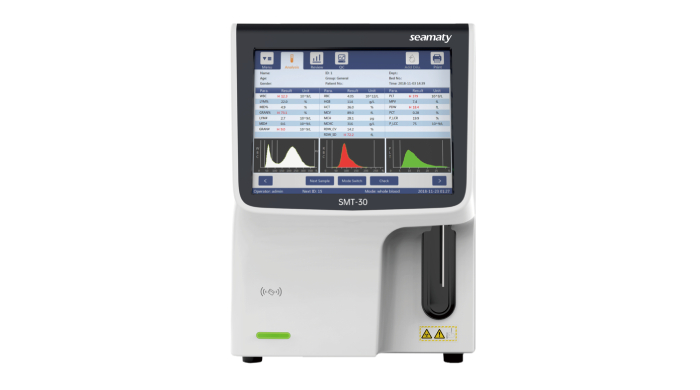release time:2021-09-09 10:41:04
Wet chemistry is the ordinary chemical reaction. It is a chemical reaction that occurs when a liquid reagent and a sample are added to a reaction vessel and mixed. Dry chemistry is only relative to wet chemistry. It is actually a chemical reaction that also takes place under humid conditions.
Comparison of test results between dry and wet biochemical analyzers
According to the existing research, the R (correlation coefficient) of all analytical items of the two methods is greater than 0.93, and the correlation test P<0.05. The statistical results show that the analytical results of the two instruments are well correlated. Both methods can meet the needs of clinical testing.
As a POCT medical device supplier, Seamaty has been focusing on portable dry biochemistry analyzer research for many years. SD1 and SMT-120 dry biochemistry analyzers have been sold to more than 80 countries and regions worldwide. Welcome to contact us: contact@seamaty.com

2022-09-18
Hematology analyzers, also known as cbc machines, are mainly divided into fully automatic and semi-automatic instruments on the market today.The difference between 3-Part and 5-Part Hematology Analyzer?

2022-08-04
Biochemical analyzers are devices that automate the operation of biochemical analysis processes using physical, chemical, and computer technologies. The automated process of a biochemistry analyzer can include: identification and sample delivery, loading of samples and reagents, charging reaction and detection conditions (e.g., wavelength, temperature, time), data processing, and system maintenance.

2022-03-14
Biochemical analysis of the body fluid samples forms the basis of medical diagnosis and plays a crucial role in treating various health ailments. Automated biochemical analyzers analyze body fluid samples and evaluate the concentration of biochemical markers,